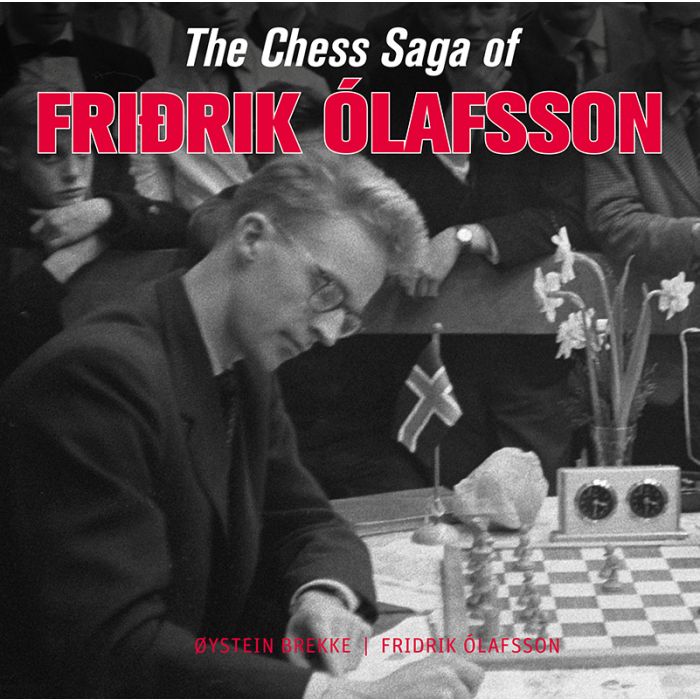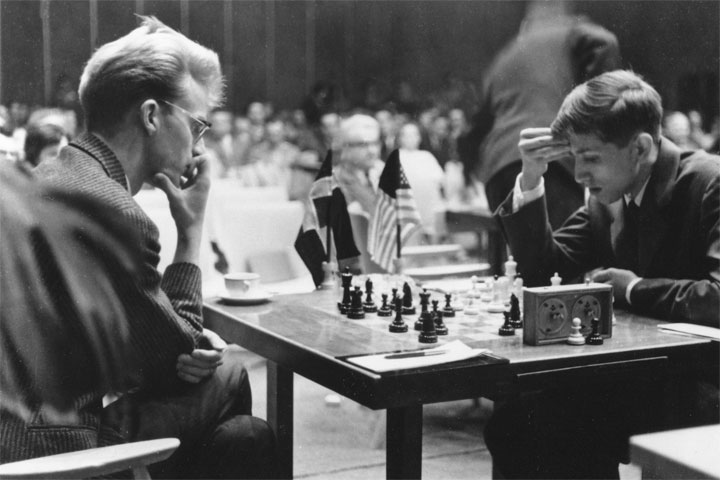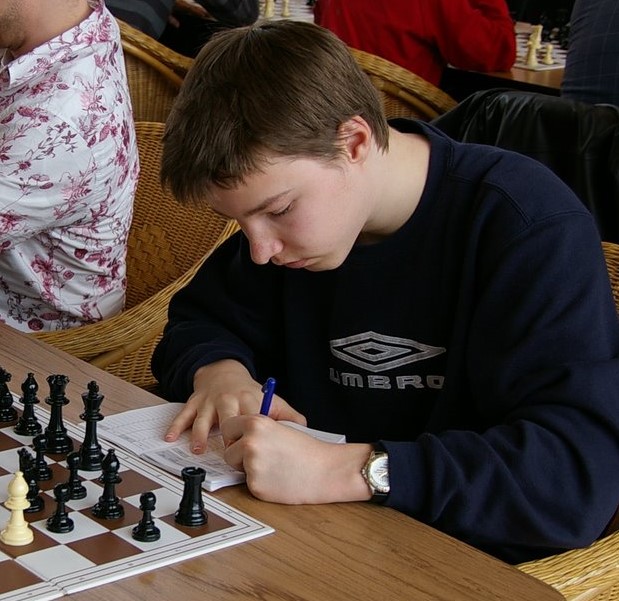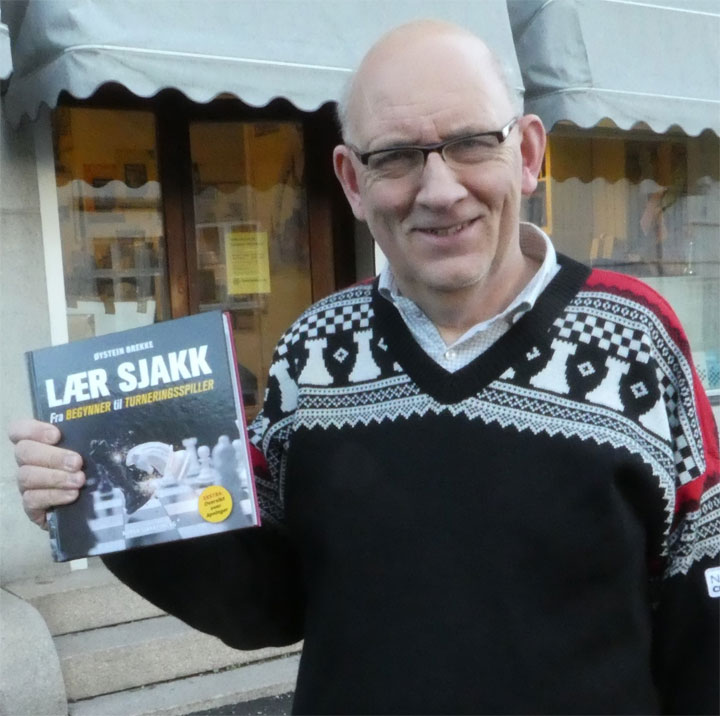



During 25 years from about 1955 to 1980 Fridrik Ólafsson was one of the world’s ten to fifty best players, in spite of coming from a remote island nation, and in spite of giving priority also to his studies, his job, his family.
Ólafsson became a national hero at home in Iceland and later President of the World Chess Federation, FIDE. This book, written by Øystein Brekke and Fridrik Ólafsson himself, follows Fridrik's career with 114 games plus four game endings, most of them played against leading grandmasters, from the legendary Savielly Tartakower in 1954 to David Navara in 2013.
The core of this book are 50 games which Fridrik presented and annotated for his Icelandic games collection back in 1976. Among his defeated opponents in this book are World Champions Petrosian, Tal, Fischer and Karpov, and lots of the world's other strongest players. Jan Timman wrote: "With his unorthodox and enterprising style he posed a threat to all top players, including the Soviet elite."
At long last Fridrik Ólafsson's chess career, with commentaries to many of his best and instructive attacking games, is available in English. The book has a foreword by the President of Iceland, Gudni Th. Jóhannesson. It includes with special contributions from Gudmundur G. Thórarinsson, Gunnar Finnlaugsson, Tiger Hillarp Persson, Axel Smith, Ian Rogers, Yasser Seirawan, Jan Timman, Margeir Pétursson and Jóhann Hjartarson.
Fridrik Ólafsson was born 1935 in Reykjavik where he still lives. Nordic Champion in 1953, at 18. Won his first grandmaster tournament at Hastings 1955/56, shared with Korchnoi and ahead of Taimanov. A World Championship candidate 1958-59. President of FIDE 1978-82. Besides his great chess career, he is a lawyer, and was for 21 years Secretary General of the Icelandic parliament, Althingi. It can be purchased in the New in Chess shop for €35.95.
Øystein Brekke was born in 1956 and is a Norwegian chess player, organizer, arbiter, trainer, historian, author and publisher. He wrote in Norwegian language both elementary books and books on chess history.
Sample chapter: Favourable Fates
In the Interzonal Tournament in Portorož I could not have chosen a better start, scoring a win against Szabo in the first round, draws against Pachman, Matanovic, and Filip in the next three followed by wins against Cardoso and Gligoric in the 5th and 6th rounds. The score against Gligoric, true enough, was marked by luck – having the inferior position and under heavy time pressure I laid a trap for him which he fell into – but in tournaments it is the wins that count, not how they are obtained. The position after 6 rounds was therefore promising – with 4,5 points, I shared 1st-2nd places – when I fell into a bad habit of losing to the “lesser prophets” in the tournament, perhaps through setting my sights too high.
My losses to Neikirch in the 7th and Rossetto in the 9th rounds had the consequence that I had to exert all my energy against “the stronger ones” in which I was successful beyond hope. In the 11th round I defeated the child prodigy, Bobby Fischer, and in rounds 13 and 14 Averbakh and Larsen met with the same fate. These successes in this part of the tournament put me on my feet again and I managed to steer my course to the end. True enough, I almost ruined everything by my loss against Sherwin in the next to last round, but the Fates smiled upon me, and my win against de Greiff in the final round “floated” me into the Candidates’ Tournament. This game was drawish at one time, but on its outcome depended whether I would “get in” or would have to compete for the 6th place along with 5 others. I did not like too much the idea of having to take part in a competition of that kind, and near the end of the game I managed to get the better of my opponent, whereupon the gleam of hope in ten expectant eyes was extinguished.
Here follows my game against Fischer which is one of the most eventful ones that I have ever played. The sacrifice of the exchange in the opening is more based on feeling than exact calculation; the evolution of the game, however, shows this to be fully justified. The many weak points created in the black position proved too much for Fischer, and he never managed to organize his defence. The end is interesting.

Fridrik Ólafsson plays Bobby Fischer in the 4th round of the international tournament at Bled, Yugoslavia, 8th September 1961. This game, included in the replay above, Fridrik lost.
In 2007 Fridrik joined his first individual international tournament abroad in 24 years, when he accepted an invitation to the “Euwe Stimulans” tournament in Arnhem. Events with a connection to Max Euwe were given some priority, after Fridrik had good relations with the ex-world champion from his years at the FIDE office in Amsterdam.
 Fridrik’s game against the talented young Dutch player Vincent Rothuis was something special in this tournament. Vincent Rothuis was 17, and got the International Master title that year. He left tournament chess only a few years later. In these days, when this book is published, Rothuis shows his talent in internet chess. He is one of the stars at bullet chess, and one of the very few who reached a 3100 rating in this discipline.
Fridrik’s game against the talented young Dutch player Vincent Rothuis was something special in this tournament. Vincent Rothuis was 17, and got the International Master title that year. He left tournament chess only a few years later. In these days, when this book is published, Rothuis shows his talent in internet chess. He is one of the stars at bullet chess, and one of the very few who reached a 3100 rating in this discipline.
From the very beginning it is a strange and romantic game between a 17 year old IM, rating 2441, and a 72 year old GM, rating 2452. Likely the “craziest” game of the tournament.
By the way, Rothuis was born in 1990, 103 years later than Tartakower, whom Fridrik defeated in 1954!
 About the author
About the authorØystein Brekke (born 1956) established his personal company Norsk Sjakkforlag in 1988, on the occasion of the publication of the book "Grandmaster Chess in Gausdal" about the tournament Gausdal Jubilee Arnold Cup 1982.
For over 40 years he gained a broader experience than most from chess life, as a player, instructor, coach, leader, organizer, referee, journalist and author. Among other things:
Øystein has beaten over three grandmasters in tournaments and in 1997 had a FIDE rating of 2225. He shared second place in the National Championships in lightning chess 1986, behind the winner Simen Agdestein. He was twice Norwegian team champion in postal chess. Apart from chess, he is the father of five, and lives at Åmot in Modum.
Øystein first met Fridrik Olafsson at the Nice Olympiad 1974. The book with him is his first in English.